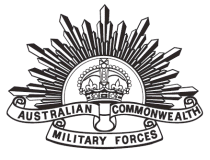
| Regimental number | 499 |
| Place of birth | Avoca, Victoria |
| School | Avoca and Maryborough State Schools, Victoria |
| Religion | Presbyterian |
| Occupation | Clerk |
| Address | 18 Dudley Street, North Fitzroy, Victoria |
| Marital status | Married |
| Age at embarkation | 22 |
| Next of kin | Wife, Mrs Lucy I Gay, 18 Dudley Street, North Fitzroy, Victoria |
| Previous military service | Served in Signal Corps at Northcote. |
| Enlistment date | |
| Rank on enlistment | Private |
| Unit name | 6th Battalion, D Company |
| AWM Embarkation Roll number | 23/23/1 |
| Embarkation details | Unit embarked from Melbourne, Victoria, on board Transport A20 Hororata on |
| Rank from Nominal Roll | Sergeant |
| Unit from Nominal Roll | 6th Battalion |
| Recommendations (Medals and Awards) |
Military Medal (Awarded) Leadership, initiative and personal bravery, while in temporary command of Platoon at Glencorse Wood, near Ypres on 20 September 1917. Recommendation date: Mention in Despatches Recommendation date: |
| Fate | Killed in Action |
| Place of death or wounding | Pozieres, Somme Sector, France |
| Age at death | 25.6 |
| Age at death from cemetery records | 25 |
| Place of burial | No known grave |
| Commemoration details | Australian National Memorial, Villers-Bretonneux, France Villers-Bretonneux is a village about 15 km east of Amiens. The Memorial stands on the high ground ('Hill 104') behind the Villers-Bretonneux Military Cemetery, Fouilloy, which is about 2 km north of Villers-Bretonneux on the east side of the road to Fouilloy. The Australian National Memorial, Villers-Bretonneux is approached through the Military Cemetery, at the end of which is an open grass lawn which leads into a three-sided court. The two pavilions on the left and right are linked by the north and south walls to the back (east) wall, from which rises the focal point of the Memorial, a 105 foot tall tower, of fine ashlar. A staircase leads to an observation platform, 64 feet above the ground, from which further staircases lead to an observation room. This room contains a circular stone tablet with bronze pointers indicating the Somme villages whose names have become synonymous with battles of the Great War; other battle fields in France and Belgium in which Australians fought; and far beyond, Gallipoli and Canberra. On the three walls, which are faced with Portland stone, are the names of 10,885 Australians who were killed in France and who have no known grave. The 'blocking course' above them bears the names of the Australian Battle Honours. After the war an appeal in Australia raised £22,700, of which £12,500 came from Victorian school children, with the request that the majority of the funds be used to build a new school in Villers-Bretonneux. The boys' school opened in May 1927, and contains an inscription stating that the school was the gift of Victorian schoolchildren, twelve hundred of whose fathers are buried in the Villers-Bretonneux cemetery, with the names of many more recorded on the Memorial. Villers-Bretonneux is now twinned with Robinvale, Victoria, which has in its main square a memorial to the links between the two towns. |
| Panel number, Roll of Honour, Australian War Memorial | 46 |
| Miscellaneous information from cemetery records | Parents: James and Elizabeth GAY; husband of Lucy GAY, 18 Dudley Street, North Fitzroy, Victoria. |
| Medals |
Distinguished Conduct Medal 'For conspicuous gallantry and ability on the 25th and 26th April, 1915, near Gaba Tepe (Dardanelles), when, on one occasion during the operations, most of the officers having been killed or wounded, and part of the line having commenced to retire, Corporal Gay showed great courage and decision of character in assisting to stop the retirement, and in leading the men forward again under a heavy fire. He also frequently carried messages over open ground swpept by a heavy fire, and exhibited a splendid example of devotion to duty.'
Source: 'London Gazette' No. 8850 Date: Military Medal 'During the attack on GLENCORSE WOOD east of YPRES on 20th September 1917, when his platoon commander was wounded Sgt. GAY took charge of the platoon, led them forward and consolidated his objective. Later on he led carrying parties to forward troops through heavy hostile barrages. By his leadership, initiative, personal bravery under very heavy fire. he greatly influenced all under his command.'
Source: 'Commonwealth Gazette' No. 31 Date: |
| Family/military connections | Cousin: B.S. Gay, killed in France. |
| Other details |
War service: Egypt, Gallipoli, Western Front Medals: Distinguished Conduct Medal, Military Medal, 1914-15 Star, British War Medal, Victory Medal |